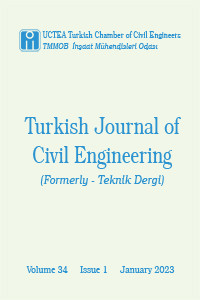A Comparative Study on Structural Wall Design Approach of 2007 Turkish Earthquake Code
-
Anahtar Kelimeler:
xx
A Comparative Study on Structural Wall Design Approach of 2007 Turkish Earthquake Code
The current version of the Turkish Earthquake Code (TEC-07) was released in 2007 and the capacity design approach for high ductility structural walls was introduced for the first time. The practicing engineers, however, mentioned various problems especially related with the shear design section of high ductility structural walls. Because of this reason, an in-depth comparative study was conducted to examine the differences and similarities of the design approaches of TEC-07, American Reinforced Concrete Code (ACI 318-08) and various studies in the literature that focus on capacity design of structural walls. In addition to this, differences between normal ductility structural walls of TEC-07 and ordinary walls of ACI 318-08 were also examined. It was observed that in the current version of the TEC-07, several clauses related to structural wall design needs further considerations. Several modifications were proposed in order to improve the structural wall design of the current code.
___
- Deprem Bölgelerinde Yapılacak Binalar Hakkında Yönetmelik, Afet İşleri Genel Müdürlüğü, Deprem Araştırma Dairesi, 2007 (Turkish Earthquake Code 2007)
- Building code Requirements for Structural Concrete, ACI 318-08, American Concrete Institute, 2008
- Minimum Design Loads for Buildings and Other Structures, ASCE7-05, American Society of Civil Engineers, 2005
- TS 500, Betonarme Yap11ar1n Tasarım ve Yapım Kuralları Standardı, Türk Standartları Enstitüsü, 2000 (Turkish Concrete Structures Code, 2000)
- Eurocode 8: Design of structures for earthquake resistance — Part 1: General rules, seismic actions and rules for buildings, European Committee for Standardization, 2003
- Eurocode 2: Design of concrete structures — Part 1-1: General rules and rules for buildings for buildings, European Committee for Standardization, 2003
- ETABS, Extended 3D Analysis of Building Systems, v9.1.6, Computers and Structures, Inc.
- Paulay T., Priestley M.J.N., Seismic Design of Reinforced Concrete and Masonry Buildings, John Wiley & Sons, 1992
- Paulay T., The Design of Ductile Reinforced Concrete Structural Walls for Earthquake Resistance, Earthquake Spectra, Vol. 2, No. 4, 783-823, 1986
- Paulay T., Seismic Response of Structural Walls: Recent Developments, Can. J. Civ. Eng, 28: 922-937, 2001
- Wallace J. W., Evaluation of UBC—94 Provisions for Seismic Design of RC Structural Walls, Earthquake Spectra, Earthquake Spectra, Vol. 12, No. 2, 327-348, 1996
- Wallace J. W. and Orakcal K., ACI 318-99 Provisions for Seismic Design of Structural Walls, ACI Structural Journal, V.99, N.4, 499-508, 2002
- Rutenberg A. and Nsieri E., The Seismic Shear Demand in Ductile Cantilever Wall Systems and the EC8 Provisions, Bulletin of Earthquake Engineering,4:1-21, 2006
- Private Communication with Luis E. Garcia, President of American Concrete Institute
- M. C. Salas, Modeling of Tall Reinforced Concrete Wall Buildings, MS Thesis, UCLA, 2008
- Thomsen J.H., Wallace J. W., Displacement-Based Design of Slender Reinforced Concrete Structural Walls — Experimental Behavior, Journal of Structural Engineering, ASCE, Vol. 130, No. 4, 618-630, 2004
- Luis E. Garcia, "Design of Reinforced Concrete Structural Walls" http://Web.ce.metu.edu.tr/acisunum/Wall-Design—2009.pdf , Middle East Technical University, Ankara, 2009
- ISSN: 2822-6836
- Yayın Aralığı: Yılda 6 Sayı
- Başlangıç: 1990
- Yayıncı: TMMOB İnşaat Mühendisleri Odası
Sayıdaki Diğer Makaleler
A Comparative Study on Structural Wall Design Approach of 2007 Turkish Earthquake Code
Özgür KURÇ, Bengi KAYIŞOĞLU, Andaç LÜLEÇ, Güney ÖZCEBE
Virtual Failure Analysis of the Çınarcık Dam
The Basin Edge Effect on Dynamic Response: Dinar Basin Model
Determination of Base Stresses in Rectangular Footings under Biaxial Bending
